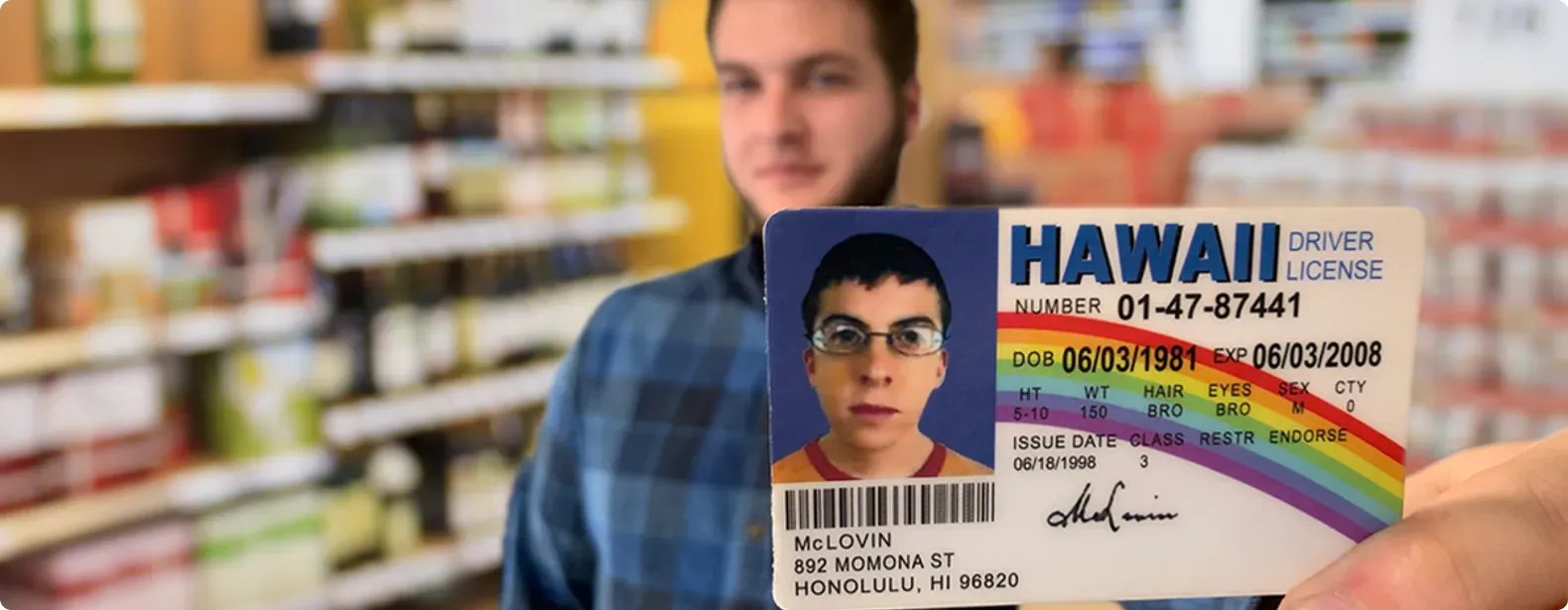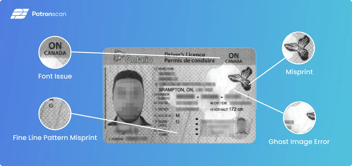Do Fake IDs pass ID scanners?

Fake ID vendors often advertise their counterfeits as “scannable.” So it’s reasonable to ask, whether or not a fake ID will realistically be caught by an ID scanner.
To answer this, you'll need to understand understand the technology used by different ID scanners and the tools available to forgers to circumnavigate automated tests.
The most popular of these tests verifies the barcode or magnetic strip on an ID.
Barcodes are for Data Collection
Most ID scanners verify an ID by reading the information on the barcode, or magnetic strip, and checking to see if the data is returned in the correct format.
Unfortunately, these features are primarily used as a means to allow ID scanners to quickly extract information from an ID and aren’t designed as strong security features.
Fabricating barcodes and magnetic strips with properly encoded identity information is fairly simple with the required technologies, and encoding schemes, readily available on the internet.
While it’s possible to catch fake IDs using simple ID scanners, it’s uncommon for forgers to craft IDs with faulty barcodes or magnetic strips. Counterfeit IDs sold through the most popular online platforms will all return as valid when scanned.
The majority of ID scanners used today rely solely on these tests alone, most fake IDs in circulation are passing as true when scanned.
To effectively catch fakes IDs, you need technology to analyze the face of the ID to identify the slight discrepancies in the more sophisticated security features built into government-issued IDs.
By comparing the imagery, fonts and spacing of scanned IDs against a real ID template using pixel-level processing, an ID scanner can accurately detect fake IDs. Few are able to achieve this
This type of analysis is referred to as pattern matching.
How do ID Scanners Effectively Catch Fake IDs?
Issuers of official identity documents use intricate designs and proprietary fonts as key security features when creating IDs to make them virtually impossible to duplicate perfectly.
The fine lines, unique typefaces, microtext and complex imagery found on an ID require securely-held technologies to reproduce which aren’t readily available to illegitimate print shops.
When these details are poorly faked, they are easily caught by the trained eye. But more advanced fake IDs will pass most human verifications and can only be caught by analyzing the ID in such granularity that often only a handful of pixels provide tell-tale signs of a fake.
It’s why Patronscan relies on its proprietary pattern-matching technology to micro analyze 4,500 different IDs to accurately verify IDs. Pattern-matching is the most common way fake IDs fail to pass our ID scanners.
With access to these near-perfect fake IDs becoming easier than ever on the dark web, counterfeit identity documents are fueling persistent yearly increases in identity fraud losses among businesses worldwide.
Holograms and fluorescent overlays are another layer of security that allow ID scanners to conduct a third test: how an ID's reflective qualities behave under different lighting conditions.
Validating Holograms and Fluorescent Overlays
Holograms and fluorescent overlays are used as an added layer of security that can be tested by shining white light on the ID or placing it under UV light.
As these security features are easily verified with low-tech solutions, the modern counterfeiter will copy these features as closely as possible. Forgers either try to reproduce these security features or port over authentic versions from real IDs to trick these tests.
Whether or not a fake ID will pass an ID scanner’s lighting test depends on the quality of the fake ID and the sophistication of the ID scanner. Patronscan uses custom lighting and hardware sensors that analyze the reflections of an ID to assist in determining authenticity.
Holograms and florescent overlays are replicated by more sophisticated fake IDs, so relying on these tests alone can provide a false sense of security.
It's All in the Scanning Engine
Fake IDs will still pass ID scanners conducting all three tests if the scanning engine isn’t strong enough. The scanning engine is the software that processes the information collected by a scan to validate the ID.
A reliable scanning engine takes time to build, is constantly updated and uses millions of scans to build algorithms that accurately fake ID detection. Without a proper scanning engine, false positives are constant and newer versions of fake IDs will end up passing these tests.
Will a Fake ID be Detected by an ID scanner?
To catch fake IDs with an ID scanner, you need the right set of ingredients. Reliable tests take a look at the smallest details on an ID to check for accuracy.
Pattern-matching and a strong scanning engine, are the most important components for verifying IDs. Even ID scanners with the right hardware mix often fail to keep their libraries updated, leading to reliability issues, false positives and unreadable IDs.
Taking all the above into consideration, will a fake ID scan?
For most ID scanners, the unfortunate answer is: yes. With Patronscan's proprietary scanning technology? Unlikely.
If you need accurate fake ID detection for your business, book a demo today and see why Patronscan is the trusted choice in ID verification.



